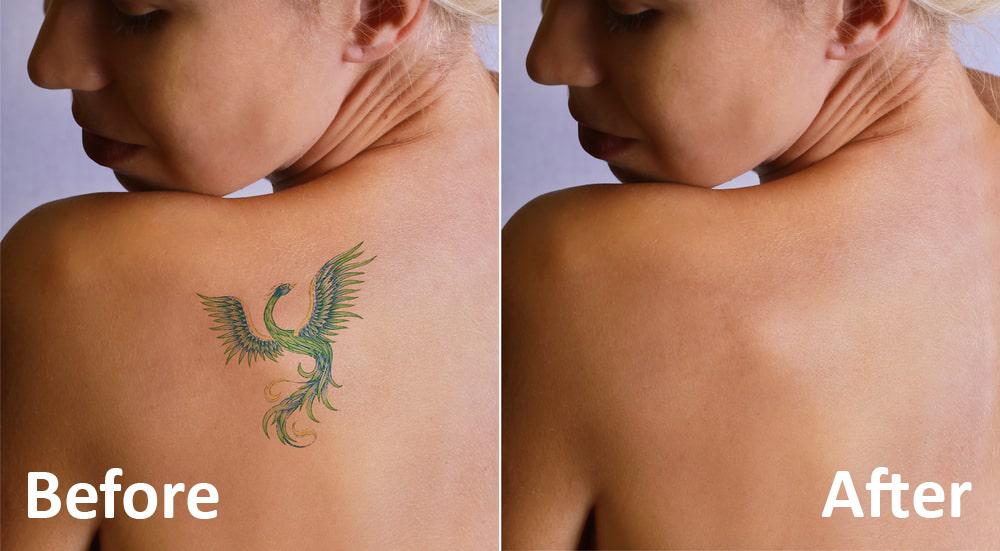Tattoo Removal
Tattoos are a type of body art that entails injecting inks and colors into the skin to create a permanent design. Tattoo removal, on the other hand, is a treatment designed to remove this permanent ink from the body. Tattoo ink particles are too big for the immune system to clear, thus they become permanent fixtures. Tattoo removal can be difficult, frequently necessitating numerous sessions due to the existence of persistent ink granules beneath the skin’s surface.
Tattoo removal methods vary, with pico laser tattoo removal being the most common. Do you want to get rid of an unpleasant tattoo? A healthcare practitioner at SVR Aesthetics in Milton Keynes Uk can provide insight into the available removal options that are targeted to your demands.
Step by Step Procedure
Consultation:
Before beginning, our expert at SVR Aesthetics will answer your questions and assure your comfort. Please express any concerns you may have.
Documentation
They may take photos of your tattoo to show the “before” and “after” stages.
Preparation
Eye protection will be supplied. Your skin will be washed and prepared, and you may be given a cold pack or numbing cream to help you relax.
Numbing Procedure
A numbing shot or lotion may be delivered to the treatment region for comfort.
Test patch
A test patch may be applied to a limited area to measure skin reactivity and establish the most effective laser and procedures.
Treatment
Expert will use pico laser to send light pulses through your skin, breaking down the ink in the tattoo. Multiple passes over the tattoo may be required, with gaps in between.
Communication
While discomfort is normal, telling your specialist of any major pain will prompt changes in the treatment to ensure your comfort.
Risks and complications
Skin Changes:
The possibility of hypo or hyper pigmentation, which alters skin colour.
Incomplete Removal:
Some tattoos may not disappear entirely.
Scarring:
Scarring is a possibility, especially with poor aftercare.
Allergic reactions:
Skin irritation may occur sometimes.
Delayed Healing:
Healing that is slower or more complicated due to a lack of sufficient care.
Infection Risk:
Infection at the treated site is uncommon but possible.
Textural Changes:
Skin texture in the treated area has changed.
Sun Sensitivity:
Post-treatment increased sensitivity to sunlight.
Pain:
Discomfort experienced during and after removal.
Recovery :
Expect to witness small white circles on the treated area after the treatment which may progress to transient redness and swelling that will normally go away within a day. A thick crust may form on the tattooed area 24 hours after treatment, which is a normal component of the skin’s healing process. Don’t be concerned; this is usual. The crust usually falls off after two weeks.
During this time, the colour and contour of the tattoo will gradually fade. Sessions are scheduled 6-8 weeks apart to allow your skin to recuperate and respond adequately to the treatment. Keep in mind that removing any tattoos involves multiple sessions; the results accrue over time. Trust the procedure for successful, gradual tattoo removal.
Cost :
The price of pico laser tattoo removal starts from £20 and varies widely based on factors like the treated area, technique used, and number of sessions required. Costs can range from a few to 150 pounds per session. For an accurate estimate, it’s best to consult with a professional considering your specific needs and the complexity of removal.


Results:
Removing tattoos requires patience for complete removal, 10–12 treatments spaced six–eight weeks apart are usually needed. The tattoo gradually fades with each laser treatment as the ink is broken down into smaller particles. However, the effectiveness of this technique depends on a number of parameters, including skin type, tattoo size, and ink colour. As a result, the total removal time is affected. Even with many removal methods available, completely removing a tattoo proves challenging. Scarring or small differences in skin tone are common after scar removal, regardless of the treatment used. Tattoos, a popular type of long-lasting body art, can sometimes prompt people to seek removal.


